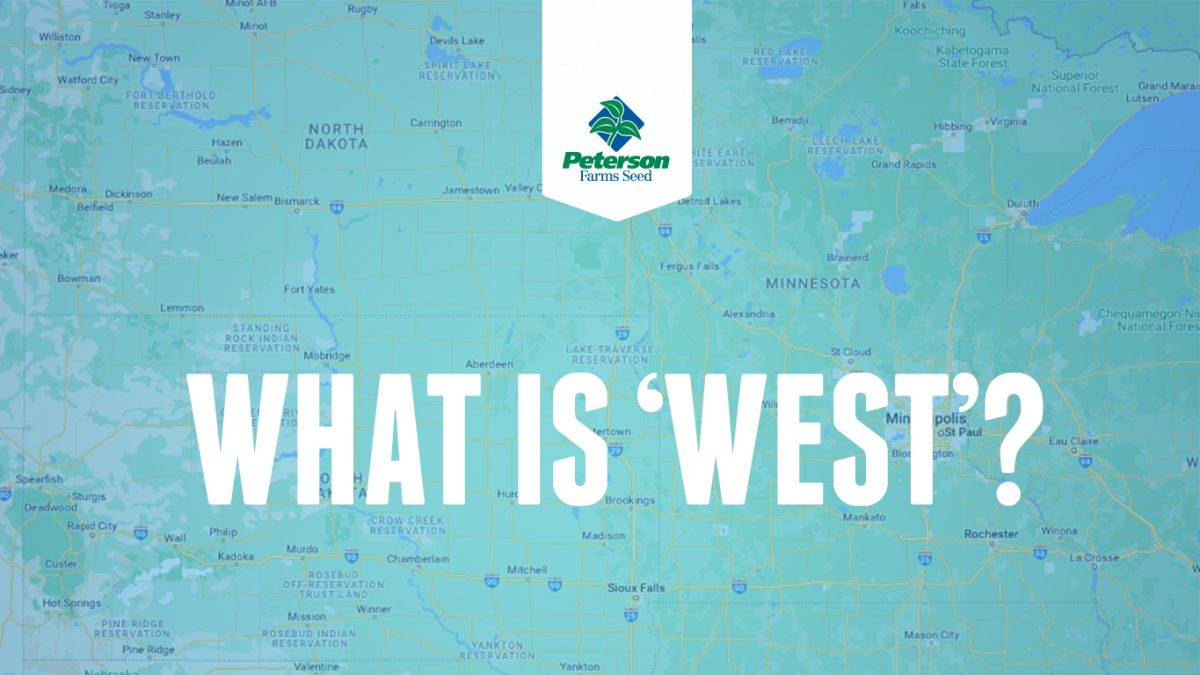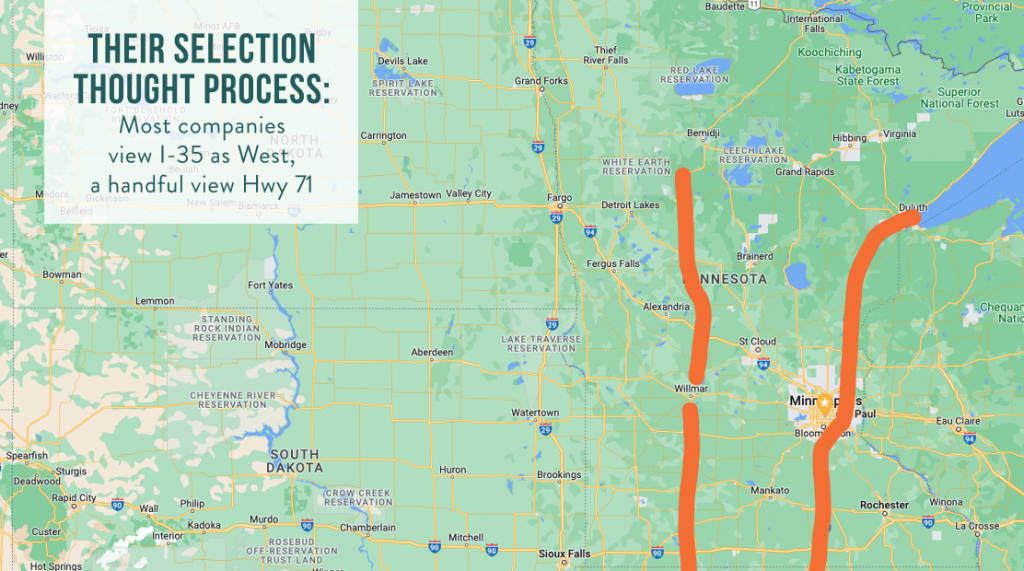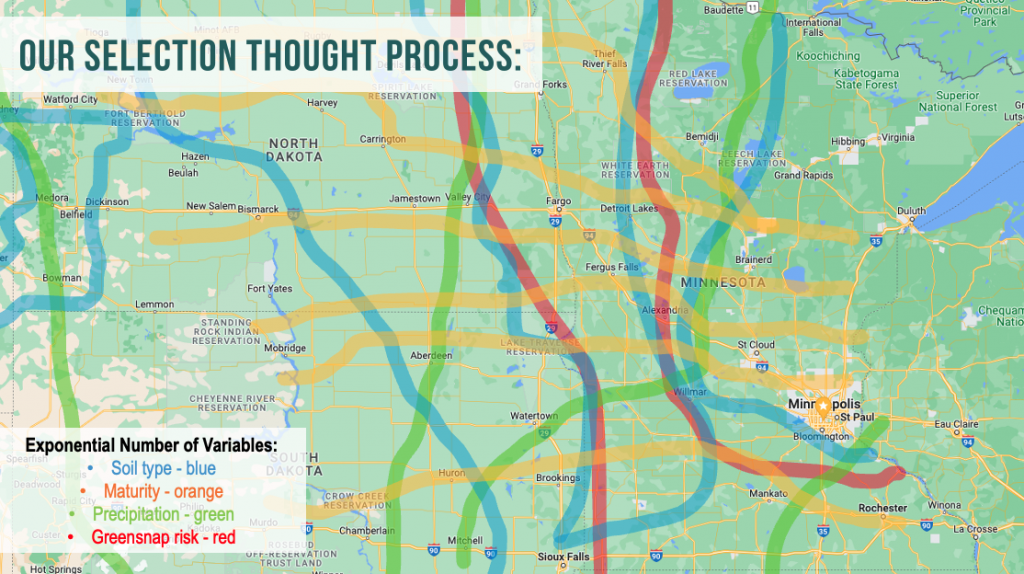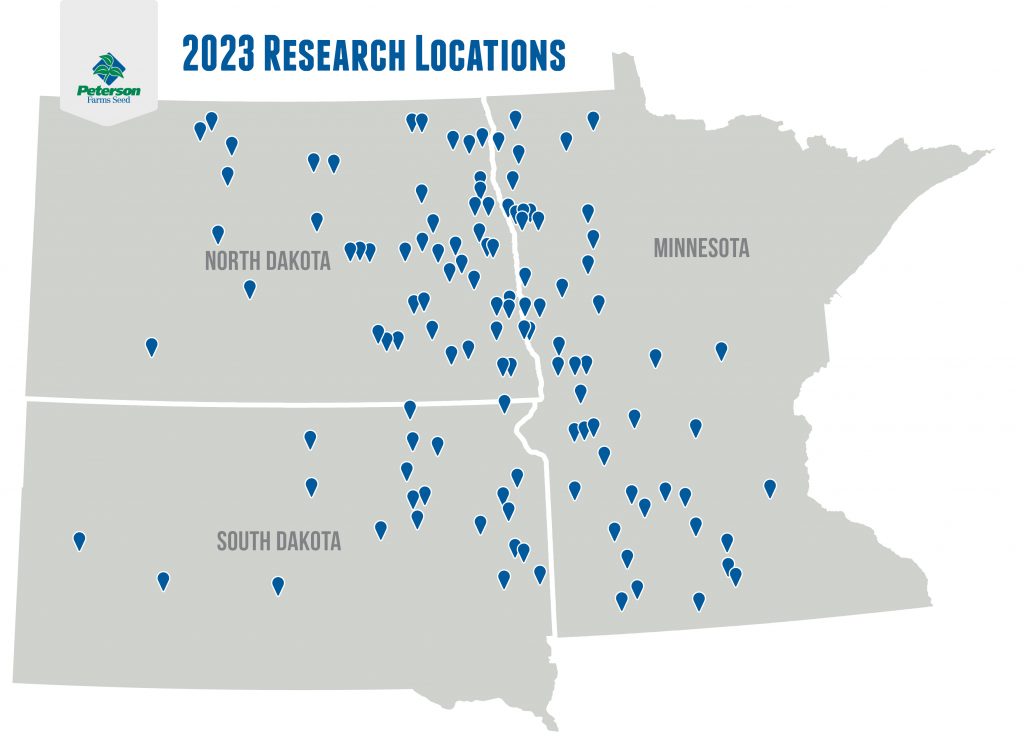What is ‘west’?

My favorite thing about working at Peterson Farms Seed is our commitment to the region we serve. Our dedication to valuing the growers’ needs above the company’s needs is second to none! Listening to our growers’ needs and then providing the right products to meet those needs is why we inspire loyalty from our customers.
Like all seed companies, we dedicate the months of October-January to analyzing hundreds of the newest products to find the best options for the coming years. October is spent touring plots and taking notes. November is focused on analyzing the previous season’s data. December and January are full of genetic supplier meetings.
The difference between other seed companies and us comes during the rest of the year as we put the entire lineup through our rigorous replicated testing gauntlet before any can become a permanent fixture in our product lineup.
So, what is west? And why are we asking? This question originated in supplier meetings last fall. Comments were being made that this product or that product “does well in the west.” So, I finally asked the question: “What do you consider west?” I was shocked to hear their responses. Half of them used Minnesota’s I-35 as their east-west line, and the other half used Hwy 71. So, using that criterion, our entire Peterson Farms Seed footprint is considered “west!”
Believe me when I say, at Peterson Farms Seed, that is not west!


For us, the west is a complicated mix of infinite variables: soil type, maturity, rainfall and greensnap are just a few. As a result, our product discussions involve these topics across our footprint.
- 280 bushel, irrigated, 40K, 0.8% organic matter, 5.8pH beach sand in Becker, MN
- .35″ ET value, Loess blown silt on saline-sodic soils with 85mph greensnap storms in New Salem, ND
- IDC, phytophthora, white mold with frost on May 20 and September 7 drilled soybeans in Warren, MN
- Cold, wet, saturated, non-tilled, 5% OM on unforgiving gumbo in Perley, MN
- 00.8 soybeans planted June 1st in Marestail, infested, 12″ annual precipitation soybeans in Mohall, ND
- Dryland, strip till, corn rootworm, high speed planters on sections with 120′ booms in Redfield, SD
The takeaway is that all these situations occur “in the west,” and each impacts our customers daily. Recognizing the immense diversity within our tri-state region is one of our most significant advantages as a regional seed company.
It’s also why we have built the most comprehensive, continuously expanding replicated testing program of anyone in the west. It is critical for us to do our own rigorous testing across our geography to ensure that the products that make up our lineup can perform under the unique conditions in “our west.” With this in mind, we have almost 150 locations across the region to explore all the challenges we might face.
And that is why you can trust that the products in our lineup meet your farm’s needs.












